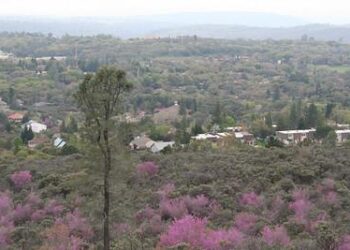(InEDC) Cris Alarcon, SOUTH LAKE TAHOE – In a case that has divided the community and raised questions about responsibility, a Lake Tahoe man has filed a lawsuit against the California Tahoe Conservancy (CTC) following extensive flooding that ravaged his beloved home. As the legal battle unfolds, residents and experts alike are questioning just who ultimately bears the responsibility for the damages inflicted upon properties in the region.
The plaintiff, Damian Sowers, with visible frustration etched across his face, claims that the negligence of the California Tahoe Conservancy directly led to the catastrophic flooding that left his cherished dwelling irreparably damaged. According to Doe, the organization’s mismanagement of lake levels during a recent heavy rainfall event caused the water to rise to unprecedented heights. Consequently, his once cozy abode turned into a damp and uninhabitable nightmare.
The plaintiff’s lawsuit asserts that the CTC failed to implement adequate measures to mitigate the risk of flooding, despite being aware of the torrential weather conditions in the region. Doe argues that, as a conservancy entrusted with protecting the delicate ecosystem around Lake Tahoe and its surrounding areas, the CTC should have taken every precaution to safeguard the properties of its residents.
With the lawsuit now in motion, legal experts are closely monitoring the case due to its potential implications for similar lawsuits against conservation organizations in the future. One prominent attorney expects this case to serve as a litmus test for clarifying the duties and responsibilities of such organizations when faced with natural disasters.
In response to the lawsuit, the California Tahoe Conservancy released a statement expressing sympathy for the affected homeowner but staunchly denying any negligence on their part. They argue that the extensive flooding was an unforeseeable force majeure resulting from an extraordinarily severe weather event. The organization claims to have diligently monitored lake levels and implemented appropriate measures to prevent flooding to the best of their ability.
Local residents in the Lake Tahoe area have been vocal about the incident, expressing mixed sentiments regarding the lawsuit. Some sympathize with the aggrieved homeowner, urging the California Tahoe Conservancy to bear responsibility for their alleged negligence. Others argue that nature’s fury cannot be blamed solely on human intervention, asserting that unpredictable weather patterns are an inherent risk of living in this picturesque yet vulnerable region.
As the legal battle unfolds, homeowners, environmentalists, and legal experts will anxiously await the outcome of this case. If the California Tahoe Conservancy is found liable for the damages, it could potentially impact the protocols and measures sanctioned by conservation entities in similar locations across the state and beyond.
Only time will tell how this high-stakes legal feud will unfold. As the courtroom becomes the theater for justice, the resolution of this case could reshape the obligations and responsibilities of organizations like the California Tahoe Conservancy when confronted with the delicate balance between environmental conservation and human settlement.










